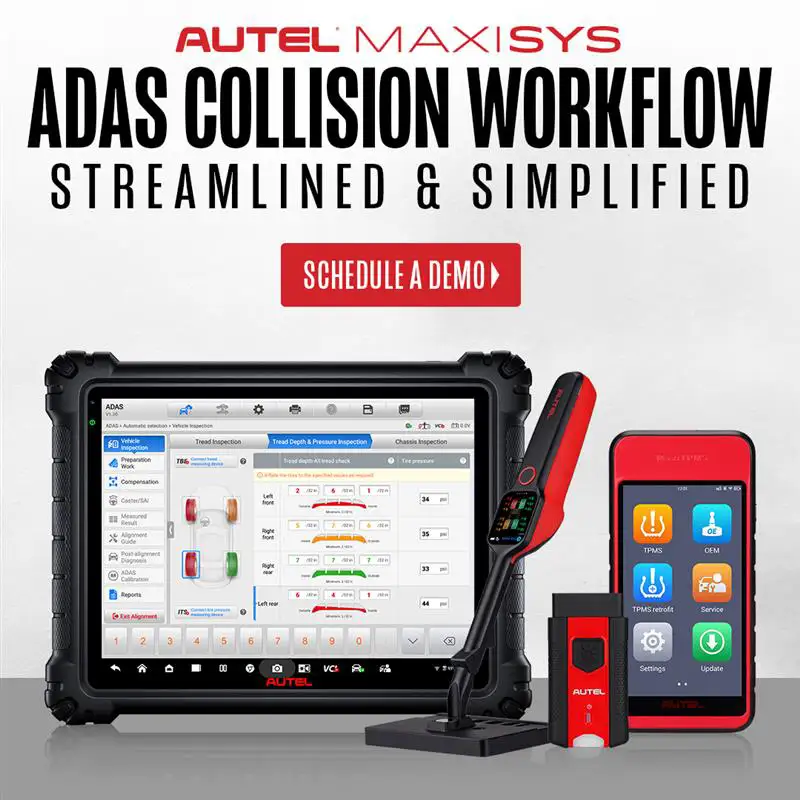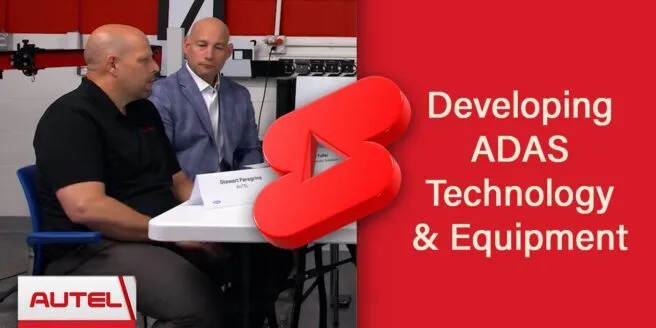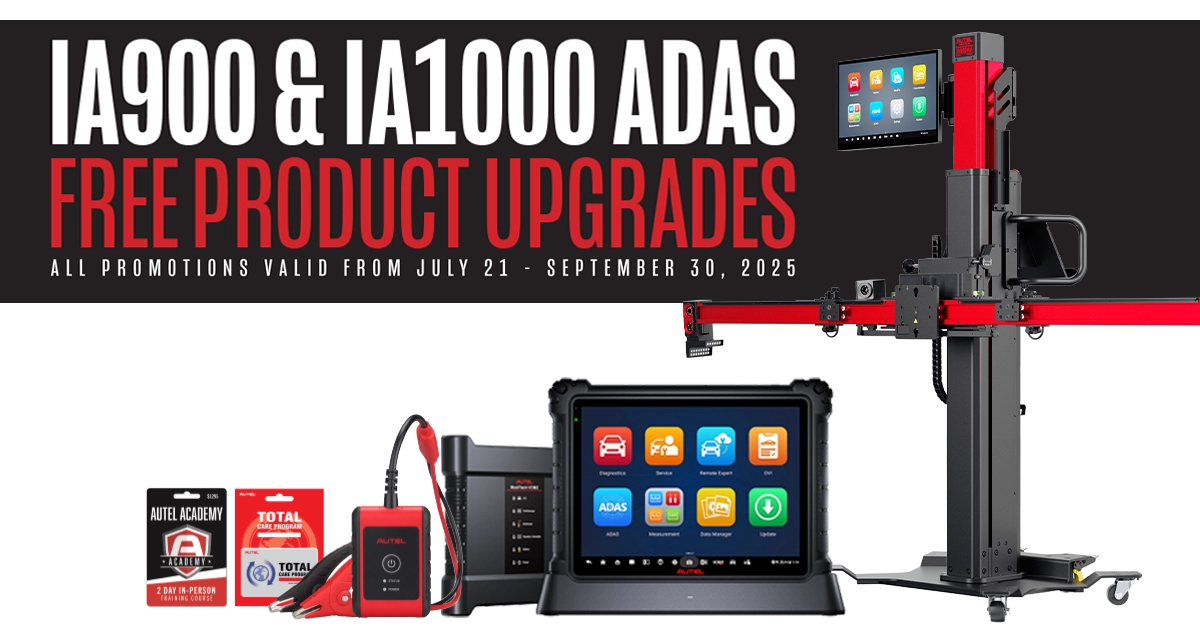ADAS experts convene at Babcox Media to discuss the hottest topic in the collision repair industry.
Originally published by BodyShop Business, June 2025
Roundtable participants:
Moderator: Jason Stahl, BodyShop Business
Stewart Peregrine, AUTEL
Vinie Putrino, AUTEL
James Rodis, OEM Calibration
Frank Phillips, ADAS Solutions USA
Josh Ronak, TAG Calibrations
Josh Fuller, ADAS Diagnostic Solutions
 Advanced driver-assistance systems (ADAS) are no longer an emerging trend — they’re a foundational component of modern vehicle safety. Yet, as these systems become more complex and widespread, much of the collision repair industry continues to lag in its understanding, equipment and processes needed to service them properly. At a recent ADAS Roundtable sponsored by AUTEL and held at Babcox Media in Akron, Ohio (that included a hands-on demonstration of AUTEL’s MaxiSYS IA900WA Calibration System, industry leaders gathered to discuss the current state of ADAS competency in collision repair — and the urgency for improvement. The message was clear: If repairers don’t step up their game now, they risk more than just pro tability — they risk customer safety, legal exposure and long-term viability. Moderator Jason Stahl kicked off the conversation by asking the roundtable participants what level of competency they feel collision repairers are at when it comes to repairing vehicle electronics.
Advanced driver-assistance systems (ADAS) are no longer an emerging trend — they’re a foundational component of modern vehicle safety. Yet, as these systems become more complex and widespread, much of the collision repair industry continues to lag in its understanding, equipment and processes needed to service them properly. At a recent ADAS Roundtable sponsored by AUTEL and held at Babcox Media in Akron, Ohio (that included a hands-on demonstration of AUTEL’s MaxiSYS IA900WA Calibration System, industry leaders gathered to discuss the current state of ADAS competency in collision repair — and the urgency for improvement. The message was clear: If repairers don’t step up their game now, they risk more than just pro tability — they risk customer safety, legal exposure and long-term viability. Moderator Jason Stahl kicked off the conversation by asking the roundtable participants what level of competency they feel collision repairers are at when it comes to repairing vehicle electronics.
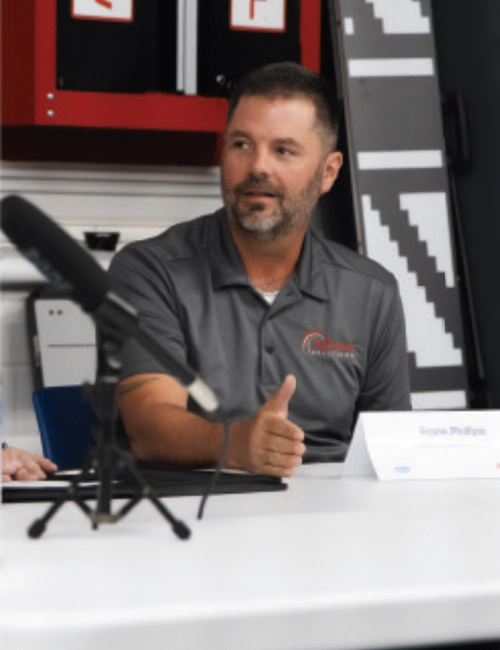 “I would tell you that the competency is very all over the board,” said Frank Phillips, vice president of strategy for ADAS Solutions USA. “We can go from independent collision repairs who are local and don’t have a lot of outreach to education, all the way up to the MSOs who have full access to lots of training and lots of information. It ba es me when I stop and think that we’ve theoretically been scanning cars in the collision space since about 2010-2011, and here we are in 2025 and we have shops who are not scanning cars yet. It’s unbelievable to me.”
“I would tell you that the competency is very all over the board,” said Frank Phillips, vice president of strategy for ADAS Solutions USA. “We can go from independent collision repairs who are local and don’t have a lot of outreach to education, all the way up to the MSOs who have full access to lots of training and lots of information. It ba es me when I stop and think that we’ve theoretically been scanning cars in the collision space since about 2010-2011, and here we are in 2025 and we have shops who are not scanning cars yet. It’s unbelievable to me.”
I think it’s really been the AUTEL way from the very beginning. “It was always around the technician themselves. How do you help that technician through every step? What are the problems as they arise? What can we do to make that job easier, more efficient, repeatable, and just elevate the technicians themselves? Also, asking the technicians, what do you want? What do you need? I don’t think there’s any secret sauce other than really caring about that process and really focusing on what’s required.” —Stewart Peregrine
James Rodis, process, procedure and training manager at OEM Calibration, agreed with Phillips on the majority of shops still not scanning vehicles.
“It’s really scary to think that there’s a lot of shops that still don’t scan,” said Rodis. “You go to calibrate a car and you have an issue, and you ask to see their pre-scan. And the guy says, ‘Bobby, did we pre-scan this car?’ And it’s like, guys, come on now. We need to do this.”
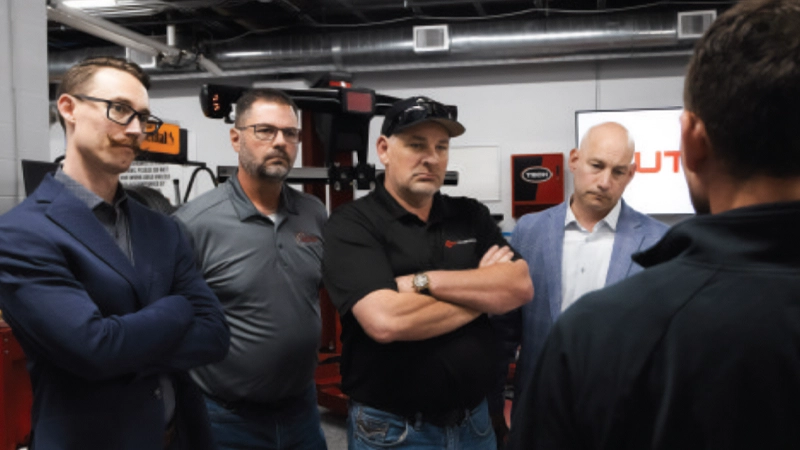
“We’ve been doing calibrations since 2014 and still hear people say, ‘Everything’s good because there’s no light on [the dashboard].’ We hear that all the time, and it’s not just managers but owners of the business.” Vinie Putrino of AUTEL said not only do shops need to realize the importance of pre- and post-repair scans, but they need a better understanding of what the codes mean.
“Understanding those codes would lead to faster, more accurate repairs and no surprises for the insurance companies when it comes to resubmittal for more parts or more repairs on these cars. But also when you’re scanning these cars, the repairs that are not associated with codes or dashlights.”
ADAS is half electrical, half physical. So if you have a car that’s being taken apart, there might not be any codes or lights, but there still might still be need for a calibration because you’re pulling that bumper or that panel or you’re doing an alignment that might not trigger a code but still requires a calibration.”
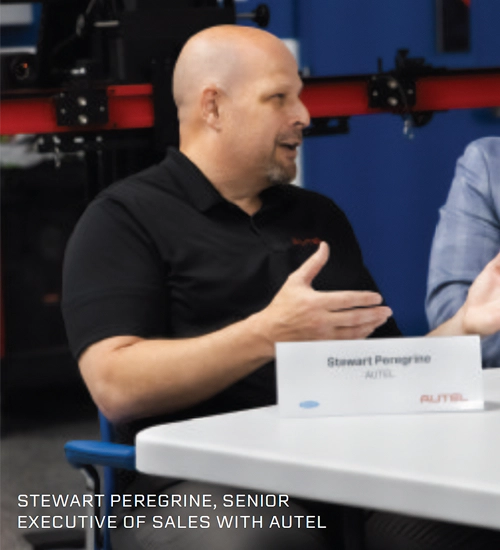 Stewart Peregrine, senior executive of sales with AUTEL, added that scanning, although super important, is only a small piece of the whole process.
Stewart Peregrine, senior executive of sales with AUTEL, added that scanning, although super important, is only a small piece of the whole process.
“The work that actually needs to get done is diagnosing the actual repair of wiring, if needed,” Peregrine said. “How many times have you looked at a fender and the wiring is impacted? You don’t see that once the car is finished, right? But you sure notice it if something doesn’t work.” Peregrine also made the point that the huge time crunch body shops are under, although not an excuse to shortcut the repair, does not do the shops any favors.
“The physical check piece becomes a missed item because it’s not on a scan. It requires service information. It requires more investigation, and time is the killer in every shop. We’re trying to get cars back to these customers in a timely fashion. There’s usually a rental that’s attached that you only get for two weeks at the most. And so as a technician and a shop, you’re at a real disadvantage.”
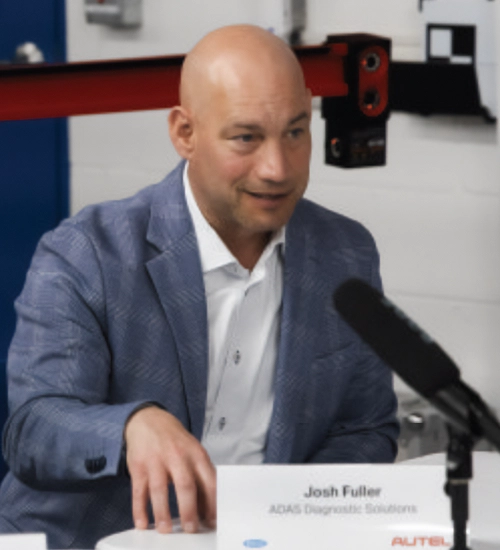 Josh Fuller of ADAS Diagnostic Solutions believes the level of repairers’ knowledge also comes down to their specific market.
Josh Fuller of ADAS Diagnostic Solutions believes the level of repairers’ knowledge also comes down to their specific market.
“I think a lot of it is, you can’t go beyond what you can’t control,” said Fuller. “What type of vehicles do you have in that market? What type of leaders do you have in these collision shops and the variables that come into play? Are we talking downtown San Diego? Vancouver? Rural Tennessee? That shop owner leader and those technicians are going to repair that vehicle the best way they know how because nobody wants to put out a bad product ideally.
I believe that it’s got to come down to the leadership skill level of the people in charge and what resources you can utilize that we have at our fingertips. I think right now, we’ve got more resources than ever to do what we need to do to pretty much raise the tide and bring all ships up.” —Josh Fuller
Josh Ronak of TAG Calibrations looks at scanning, calibrations and other diagnostic work as a right way and a wrong way: are shops performing these operations per OEM guidelines or merely doing them to check a box?
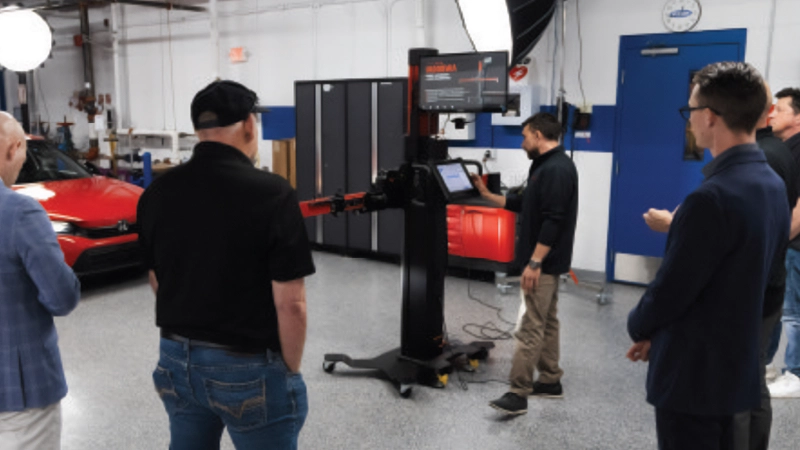
“Regarding pre- and post-scans, are we doing it because insurance pays us 30 minutes or are we doing it because we’re educating ourselves on the level of repair necessary on that vehicle? When that vehicle is through to the end of the repair process, are we scanning that car looking for open circuits for stuff unplugged or are my calibration guys going to be plugging stuff in for the body shop? That’s not necessarily part of the calibration procedure, but more and more we’re that end step, the last touch point”
Equipment
Stahl made the point that ADAS has caused the collision industry a lot of stress and angst for obvious reasons, but there is something to rejoice about: the level of ingenuity, inventiveness, genius and innovation demonstrated by equipment manufacturers in a very short time to solve a market need.
“I think it’s really been the AUTEL way from the very beginning,” said Peregrine. “It was always around the technician themselves. How do you help that technician through every step? What are the problems as they arise? What can we do to make that job easier, more efficient, repeatable, and just elevate the technicians themselves? Also, asking the technicians, what do you want? What do you need? I don’t think there’s any secret sauce other than really caring about that process and really focusing on what’s required.”
It’s been interesting to watch the evolution of ADAS equipment. We think back on calibrating 2014 model-year cars and the AUTEL IA600 or IA800. And now we advance into the precision that comes with the IA900 and the capability of that tool and what it has allowed us to do from a technician skillset level —making it easier.” —Frank Phillips
Added Phillips, “It’s been interesting to watch the evolution of ADAS equipment. We think back on calibrating 2014 model-year cars and the AUTEL IA600 or IA800. And now we advance into the precision that comes with the IA900 and the capability of that tool and what it has allowed us to do from a technician skillset level —making it easier. I once had a mentor who had the philosophy of, you have to take the approach to always make it so simple that a human will do it. It’s impressive to see how fast it has come from strings and plumb bobs exclusively and tape marks on the floor to much more sophistication and technology built in.”
“I love that it’s repeatable and that a human can’t fail with that,” said Rodis. “We do need something like that because humans are lazy. We want the easy button. I was a technician for a long time. I was always looking for, how am I going to make more money? What can I do that is going to get me to that end goal? A tool like this, it can beat that. It can make sure that it’s done correctly.”
Putrino said AUTEL is always looking at what the technician needs next.
“When we first came out with our ADAS equipment, yes, it was a solution for ADAS, target placement, repeatable, easier to use. Then, as cars got older with ADAS, we saw the need for alignment. So we developed alignment pre-check and an alignment frame specifically for performing alignments tied into ADAS calibrations. Now we’re going even further with physical angle validations and other equipment to check deeper into the car and underlying issues that might cause those calibrations to fail. So we’re working on not just giving the technician an easy-to-use target placement machine, it’s an all-in-one guided diagnostic machine to help them get through fixing that car.”
Ronak referred back to Phillips’ point about calibrating cars in 2014 and how much more sophisticated cars have gotten now, with the equipment having to keep up.
“And as we have progressed through time, there are more and more systems on cars, and I think the complexity of how these systems talk to each other is also increasing,” Ronak said.
We’re looking at new calibrations coming out every year for new systems. I’ll be the first person to point out that AUTEL’s tool is vastly superior than some of the static target tools that are purchasable through the OE. If we look at the early Honda windshield camera target, I think in my head about this drooping scaffold that you have to put in front of the car, or I think about the parking sensor azimuth check tool, which is a milled C channel piece of metal with this weird little button on it. Good luck ordering one!” —Josh Ronak
“If the end goal is to calibrate that car as close to the OE documentation warrants that calibration be performed, I’ve had a significantly easier time documenting and using a tool made by AUTEL than what the OE manufacturer has provided.”
Liability
Liability was a big topic of conversation. It has always been part of the collision repair business, but it has grown exponentially with the introduction of ADAS safety systems.
“There are some body shops that are very proactive and exceedingly sensitive to the liability around calibrations, and there are some that, through no fault of their own, have not had the exposure necessary,” said Ronak. “And one of the things I really like to think about when I talk to body shops that are on the cusp of joining the 21st century when it comes to understanding the liability is when we started setting standards for airbags and how those systems needed to be repaired and the processes that got put into place to ensure that when those systems detonated in a car or needed to be replaced, we followed the necessary procedures. But airbags protect who? The occupants of the car. Who does ADAS protect? It protects occupants in the car and everyone that shares roadway space with that vehicle. So the impact is exponentially larger.”
Even though Ronak commends some shops for being proactive in creating their own calibration spaces, and he would never say body shops should not be calibrating cars (“Absolutely they should be if they can”), he went on to say that he feels the brick-and-mortar, purpose-built calibration center is the ideal solution for a body shop because it is set up with the optimum environment for calibration. “Our entire business model surrounds the fact that we’re motivated to close that liability loop.”
Regarding subbing the work to a dealer, this does not mitigate liability, Phillips said.
“Shops that are highly OE-certified tell me we go to the dealer because it’s required for OE certification. Did you do your due diligence and walk into that dealership to see how they’re calibrating cars? Did you validate the procedures that you’re assuming that they’re doing based on your OE certification? The answer’s no, but then the shops say they’re going to take the liability from me. No, they might stand next to you in court, but guess what? When the check gets written, it’s going to be from both of you. It’s not going to be just from one of you.”
The Technician
Stahl steered the discussion toward finding technicians suitable for ADAS work, and what do they look like? Some feel there is also a difference between, say, an ADAS technician and a diagnostics technician. But what kind of person likes to troubleshoot vehicle electronics?
“I like a gamer,” said Rodis. “I like a guy who’s into video games and can build computers. He just understands it at a different level than I did when I first started this. I was not the most technical guy 10 years ago; I had just sent my first e-mail. But I am an information junkie, so I dove in and learned as much as I could, and you want people who are hungry for knowledge because things are changing every day. It’s just leaps and bounds. We’re getting to where it’s like ‘The Jetsons.’ So you have to have somebody who’s open-minded, willing to get educated, actually taking classes and paying attention and retaining that knowledge.”
Phillips added, “It has to be a problem-solver. That’s the hardest thing because collision is very visual. I see a dent, I fix the dent, that’s collision repair. In diagnostics, there is not a visual aid to tell you something is wrong. So you have to have an inherent ability to solve a problem and be willing to keep hunting to find that problem to identify it because it’s a needle in a haystack.”
Fuller agreed that the ideal person for ADAS work is someone who is inquisitive and curious about why, all of a sudden, there is a different outcome on a task they do many times over.
You have to look at their genetic makeup and their behaviors and characteristics,” he said. “The first thing you do in a job application is get their name and information, but you should also have them ll out a behavioral assessment. Where do they fall? They must be curious and like to solve problems and troubleshoot, asking themselves, ‘I’ve seen this 13 times over but this time this one thing is acting differently. Why?’ ” —Josh Fuller
Peregrine does see a definite distinction between a calibration technician and a diagnostic technician.
“For a calibration technician, it’s as simple as read, follow, execute,” said Peregrine. “But a diagnostic technician would be somebody who is passionate about how the system works, understanding all the ins and outs of the wiring diagram, how the communication lines work with each other, how the systems talk, etc. And that’s different, right? Read, follow and execute is fairly easy, while the other is a lifelong commitment to this industry and leveling yourself up. For example, understanding how to do a volt drop. Do you know how many technicians, when you ask them that, can’t accurately do that? So I think it’s the passion — really wanting to know how that system works is key.”
Ronak countered with the statement that, when he’s hiring at one of his calibration centers, he does not distinguish between a calibration tech vs. a diagnostics tech.
“To me, if this was a Venn diagram, the overlap would be substantial,” he said.
Phillips said much like collision repair, with ADAS repair, there must be a distinction between entry-level vs. accomplished.
“There’s always going to be this element of A, B and C tech, right? We’re a trades industry, so there’s an apprentice element that has to be considered.”
“Everybody has to start somewhere,” added Peregrine. “You’re not an expert overnight.”
Putrino steered the discussion back to the traits of a perfect ADAS technician, and one is attention to detail.
“Josh [Fuller] mentioned it, the person who does something 15 times and then that one time is different. Why did that happen differently? Did you delve into how the components operate, how that sensor operates, how it operates with the entire system? Did you look into the wiring diagrams? Did you follow all these wires? Did you see how everything co-mingles with the other sensors? Did you read the service information? Did you go through all the steps one through six instead of skipping to the end and trying to assume the repair? That’s what I think differentiates a diagnostic technician.”
Rodis related a story about an employee he has back at OEM Calibration’s home base who has an insatiable desire for knowing how something works.
“He’s our diagnostics guy, but he does all of our technology stuff too. And when something doesn’t work, we buy a new one and throw the old one away. But he’s going to pull it out of the trash, open it up and try to gure out why it broke. He just has to know that answer or it’s going to fry him and screw him up for a couple days, which is why we love him — we love that attention to detail.”
Fuller talked about the collision industry’s responsibility to develop these kinds of technicians.
“Who is that ideal technician and how do you hire them and put them into play? The truth of the matter is there is no such thing as ideal, right? Because not every shop or calibration facility is going to pick that person o the street. Just like there is no collision facility that’s going to find that perfect tech and they’re going to be a culture fit right off the bat and bang out 250% productivity. So one of the solutions that comes into play is the use of tooling and training and rotating employees to different positions so they get a flavor for everything and decide what suits them best.”






